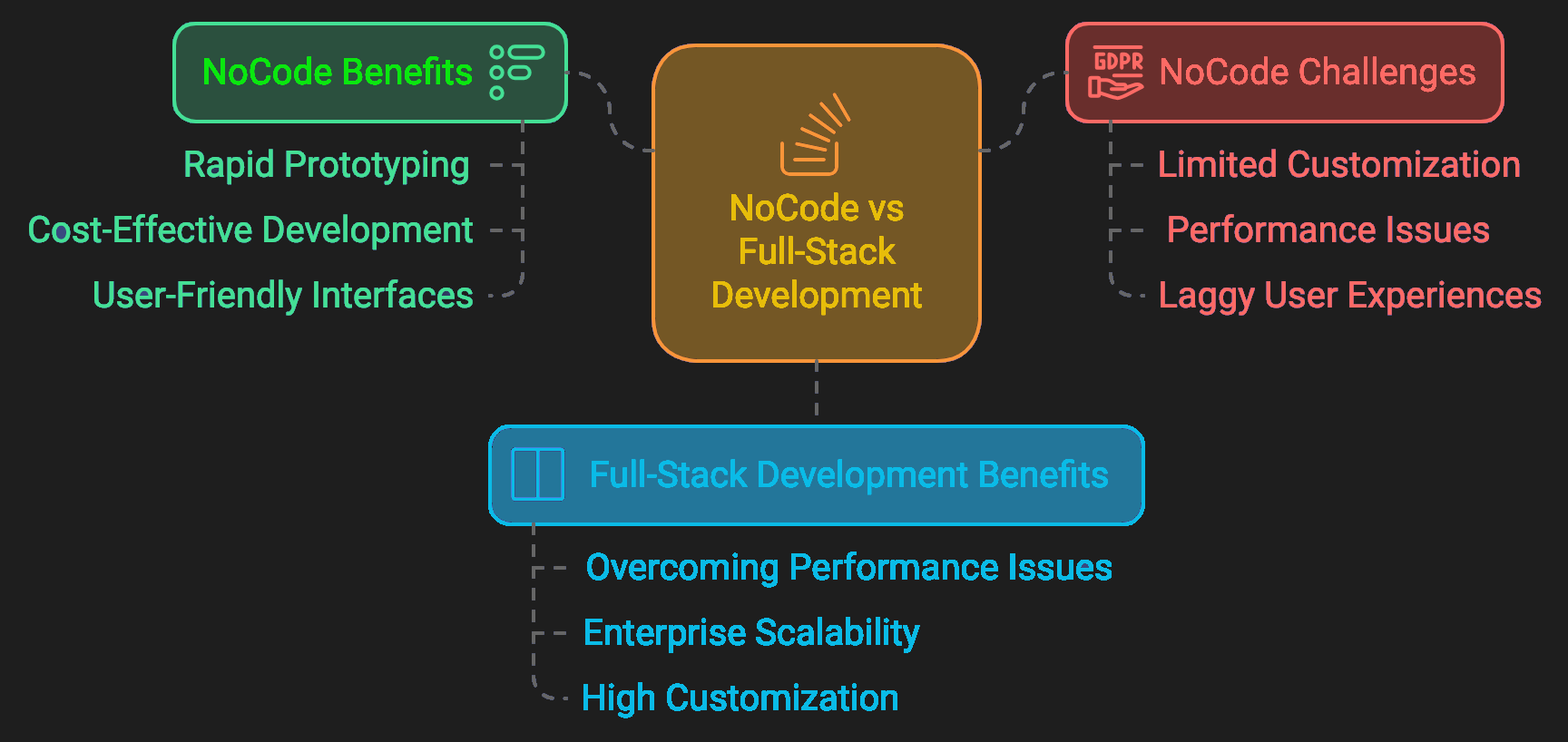- +356 7993 2555
- [email protected]

Benefits of NoCode for Product Validation
Rapid Prototyping
NoCode platforms excel in rapid prototyping, allowing businesses to quickly bring ideas to life without extensive coding. This speed enables teams to test concepts, gather user feedback, and make iterative improvements in a short amount of time. The ability to launch MVPs swiftly provides valuable insights into market demand and user preferences.
Cost-Effective Development
Building initial prototypes with NoCode platforms is often cost-effective. By avoiding the need for extensive development resources and technical expertise, businesses can allocate budget more efficiently. This approach minimizes upfront costs and allows for experimenting with different ideas without significant financial commitment.
User-Friendly Interfaces
NoCode tools typically offer user-friendly interfaces that simplify the development process. Non-technical team members can contribute to building and refining products, facilitating collaboration and speeding up the development cycle. This accessibility empowers businesses to innovate and iterate more effectively.
Challenges in Scaling with NoCode
Limited Customization Options
As businesses scale, the limited customization options of NoCode platforms become a significant drawback. These platforms often lack the flexibility required to implement complex features and integrations, which are crucial for meeting the specific needs of enterprise-level applications.
Performance Issues
NoCode platforms can struggle with performance issues as user bases grow and applications become more complex. Scaling these platforms to handle increased traffic and data loads can lead to slower load times, reduced responsiveness, and an overall slower user experience.
Laggy User Experiences
Another common challenge with NoCode platforms is the laggy user experience that can arise from performance constraints. As applications become more feature-rich and demand more resources, the platform's inherent limitations can lead to slower performance and user dissatisfaction.
Full-Stack Development as a Solution
Overcoming Performance Issues
Full-stack development offers a robust solution to performance issues by utilizing optimized technologies and scalable architectures. With technologies like .NET, React, and MongoDB, businesses can build applications that handle high traffic and data loads efficiently, ensuring a smooth user experience even as the user base grows.
Enterprise Scalability
Full-stack development provides the enterprise scalability required for growing applications. Unlike NoCode platforms, full-stack solutions are designed to scale smoothly with increased demand. This scalability is achieved through microservices architectures and cloud-based solutions that can be tailored to meet the specific needs of large organizations.
High Customization
One of the key advantages of full-stack development is the high customization it offers. Developers have complete control over the application’s features, design, and integrations, allowing for a tailored solution that aligns with business requirements. This level of customization is essential for creating complex, enterprise-grade applications.
While NoCode platforms are valuable for rapid product validation and MVP development, they often fall short when it comes to scaling for enterprise use. Issues such as limited customization options, performance problems, and laggy user experiences can impede growth. Full-stack development provides the necessary enterprise scalability, high customization, and performance optimization needed to build robust, scalable solutions. By transitioning to full-stack development, businesses can overcome these challenges and achieve long-term success with applications that grow and evolve alongside their needs.


